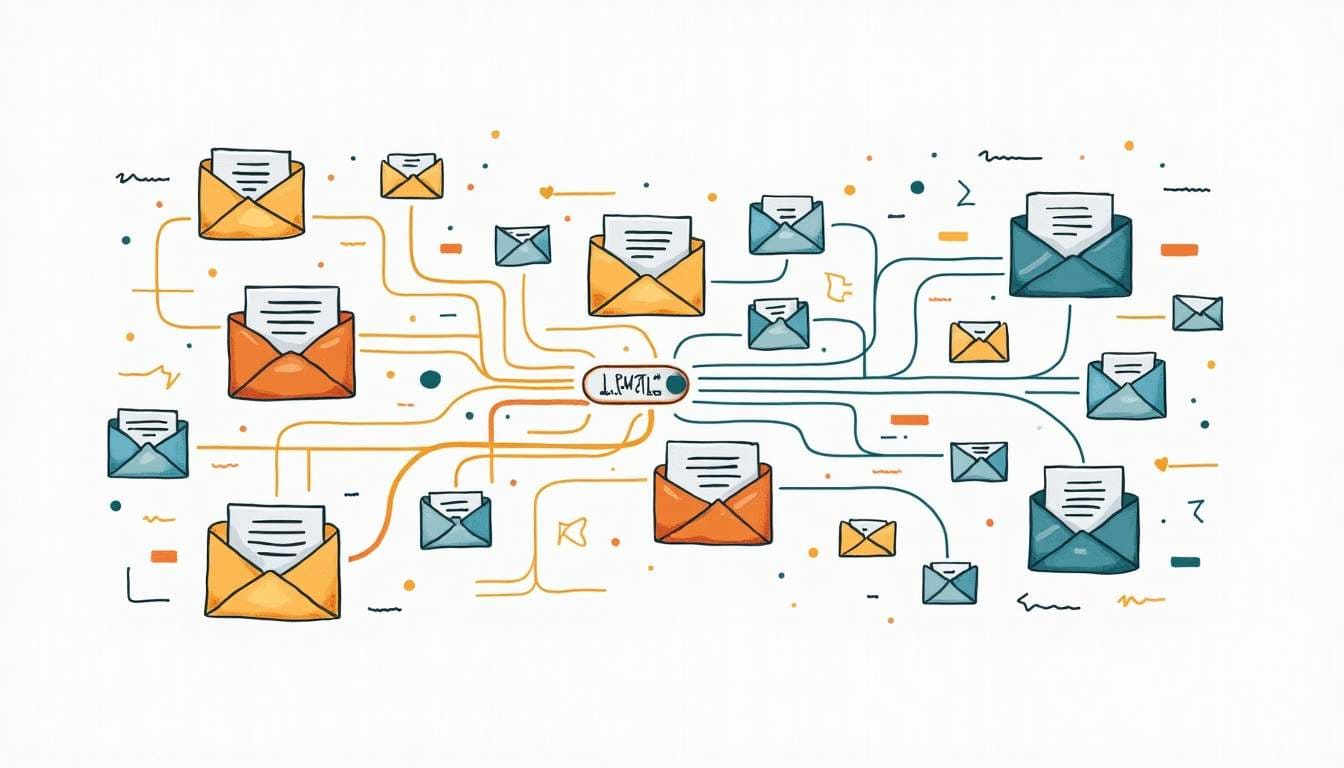In the world of email management, two protocols stand out: IMAP and JMAP. Although they have similar goals, their operation and characteristics differ significantly. This article explores these differences, highlighting the advantages and disadvantages of each.

What is IMAP?
IMAP, or Internet Message Access Protocol, is a communication protocol used to access email messages on a server. It allows users to view their emails from different devices while maintaining real-time synchronization.
How IMAP works
IMAP works by allowing users to connect to a mail server to read and manage their emails. Unlike POP (Post Office Protocol), which downloads messages to a device and deletes them from the server, IMAP leaves emails on the server. This means users can access their messages from any device, whether it's a computer, tablet, or smartphone.
Each action performed on one device (such as reading, deleting, or moving an email) is synchronized with the server. Thus, if a user reads an email on their phone, it will appear as read on their computer as well.
Advantages and disadvantages of IMAP
The main advantages of IMAP include its flexibility and ability to manage multiple devices. Users can also organize their emails into folders, making it easier to manage large volumes of messages.
However, IMAP has some drawbacks. For example, it requires a constant internet connection to access messages. Additionally, email management can be slower than POP due to the need to synchronize data with the server.
Another interesting aspect of IMAP is its ability to support advanced email features. For example, it allows users to mark messages as favorites or tag them, making it easier to search for them later.
IMAP for businesses and professionals
Furthermore, IMAP is particularly beneficial for professional users who need to manage a high volume of communications. Thanks to its structure, teams can collaborate more effectively by having access to the same messages and tracking changes in real time. This reduces the risk of confusion and errors while improving overall productivity.
What is JMAP?
JMAP, or JSON Meta Application Protocol, is a newer protocol aimed at modernizing email management. Unlike IMAP, which uses a command-based text communication format, the JMAP protocol relies on JSON requests, making it more suitable for modern web applications.
How JMAP works
JMAP allows users to access their emails more efficiently through JSON requests. This means data can be sent and received as lightweight data structures, reducing the amount of bandwidth required.
In addition to managing emails, JMAP can also handle other types of data, such as contacts and calendars, making it a versatile protocol. This integration allows for more efficient synchronization between different types of data.
Advantages and disadvantages of JMAP
The advantages of JMAP include its speed and efficiency. Thanks to its use of JSON, it enables faster communication between the client and the server. Additionally, its ability to handle multiple types of data makes it an attractive choice for application developers.
However, JMAP is still relatively new and not as widely adopted as IMAP. This means some email service providers do not yet support this protocol, which can limit its use for some users.
Comparison between IMAP and JMAP
To better understand the differences between IMAP and JMAP, it is useful to compare them across several key criteria.
Performance and efficiency
In terms of performance, JMAP has an edge over IMAP due to its use of JSON and its ability to reduce the amount of data exchanged. This can result in faster load times and a smoother user experience, especially on limited internet connections.
Ease of use
- IMAP is widely recognized and used, making it a familiar choice for many users. Its folder structure and message management are intuitive and well-understood.
- JMAP, on the other hand, may require a learning curve for non-technical users. However, for developers and users of modern applications, its JSON-based structure can offer superior flexibility and ease of integration.
Adoption and support
- IMAP is a proven protocol supported by almost all email service providers.
- JMAP, while promising, is still in the adoption phase. Although some providers are starting to integrate it, it is not yet universally supported.
Use cases
The choice between IMAP and JMAP can depend on several factors, including the user's specific needs and the environment in which they work.
For occasional users
For those who primarily use email for occasional communications, IMAP is often sufficient. Its simplicity and wide adoption make it a practical choice.
For application developers
Modern application developers looking to integrate email features into their products may find JMAP more suitable. Additionally, for those who prioritize open-source email, it is important to check the compatibility of protocols with available market solutions.
For businesses
Businesses that manage a high volume of emails can benefit from IMAP's advantages, particularly its ability to synchronize messages across multiple users and devices. However, those seeking to innovate and integrate modern open-source solutions might consider JMAP, especially if they have the technical resources to implement it.
In summary, IMAP and JMAP are two email protocols that address different needs. IMAP is a proven and widely adopted choice, ideal for occasional users and businesses. JMAP, on the other hand, offers performance and flexibility advantages but still requires broader adoption.
The choice between these two protocols will depend on the specific needs of each user or organization. While IMAP continues to dominate the email landscape, JMAP could well represent the future of email management, especially as technologies evolve and user requirements change.

 Русский
Русский
